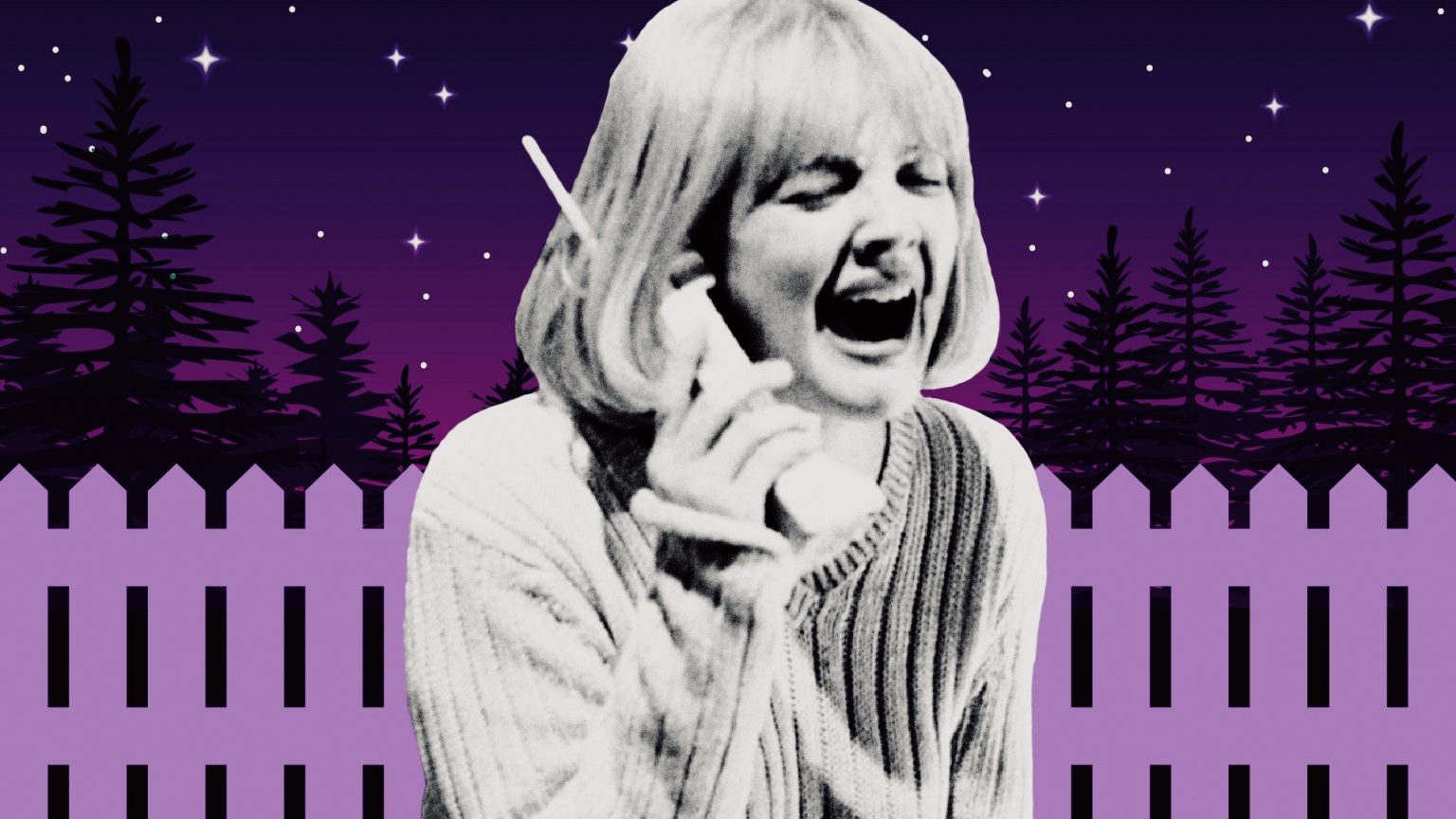“Which door am I at?”
The iconic opening scene of Wes Craven’s Scream, the movie that birthed the ghost-face killer and one of the most successful horror franchises of all time, features a question about the layout of a large suburban house. At first, it seems incidental – suburbia is a familiar landscape that will resonate with plenty of audiences.
But then again, suburban landscapes – houses with multiple doors and entries, porches, closets, and gates – seem to serve as the perfect spaces for slasher film villains to roam free. Let me explain.
Suburbia or a typical sleepy little town is, theoretically, the place where middle-class workers retreat to safety, far from the crime and danger of more urban areas. But in certain horror films, suburban structures become physical manifestations of fear.
In Scream, the first thing to notice about Casey Becker (played excellently by Drew Barrymore) is the affluent home she lives in. The house is huge with many places for people to hide: multiple entryways, closets, and corners. In this case, the killer ironically exploits the character’s feeling of safety and comfort brought on by their large house. “What door am I at?”: The last question in the killer’s scary movie pop quiz is seemingly Casey’s only chance to save herself, and while it’s possible it wouldn’t have mattered how she’d answered, Craven’s emphasis on the question underscores how the suburban structure can be used as a symbol of fear. There are too many doors, too many windows, too many dark shadows in which the killer can hide, waiting for his moment.
But this concept of the urban structure as a horror symbol, which extends throughout the Scream franchise, was, perhaps, best put to use in John Carpenter’s Halloween — which is also, uncoincidentally, the ghost-faced killer’s favorite horror movie.
Carpenter expertly uses the combination of both nature – trees, bushes, and backyards – and suburban houses to create fear. Michael Myers, iconic for his ability to move about undetected (usually to make up for his inability to move quickly), makes expert use of the suburban landscape to stalk his victims. One moment he is behind a tree, the next moment behind a group of sheets on laundry lines, and then finally he appears behind his victim. Carpenter emphasizes the lack of safety in suburbia with Michael Myers’ ability to hide in plain sight. Perhaps the most iconic moment in Halloween is the scene in which Michael stalks Laurie Strode through the house: As Strode tries to find a place to hide, she uncovers the bodies of her former friends in the closets and cabinets, and Michael himself appears from the shadow of a corner created by a doorway. What makes these moments truly horrifying is the sense that this neighborhood and all the houses in it were designed to be “safe havens,” but now the locked doors are precisely what Michael Myers exploits to kill his victims.
Halloween might be the most iconic movie to use suburbia as a symbol of fear, but It Follows directed by David Robert Mitchell, might be the most recent. Like Scream and Halloween, the film opens with an emphasis on space and suburbia. The opening scene is shot in a 360-degree view of a quaint and quiet neighborhood as a teenage girl runs in a circle from something that can only be seen by her. The early implication is that neither her house, nor car, nor trees can protect her. The “it” in It Follows is more relentless than even Michael Myers and the killers in Scream. In the movie, Jay, the protagonist, is instructed to never enter a place that doesn’t have multiple exits, but in this case, the suburban structures are only a brief reprieve, because we soon find that doors, closets, windows, and barriers to entry become useless once the monster decides to follow its victim. Jay sees “it” on rooftops, in hallways, outside her house, and even in the face of loved ones. In this way, It Follows shows suburbia as the false sense of safety that it has always been. Something can always enter, even if you try to obstruct it. Suburbia, for all the safety it promises far removed from the inner city, is no safety at all when a monster can track and chase you wherever you go.
Every year on Halloween, children in the suburbs wear costumes and trick-or-treat, seemingly safer than their big-city counterparts because of their gates and less densely populated areas. However, horror films set in suburbia show that those same structures can quickly become a source of terror and haunting.
Watch Now: John Carpenter’s Dark Star — because what’s a starship, but a ranch house in space?




